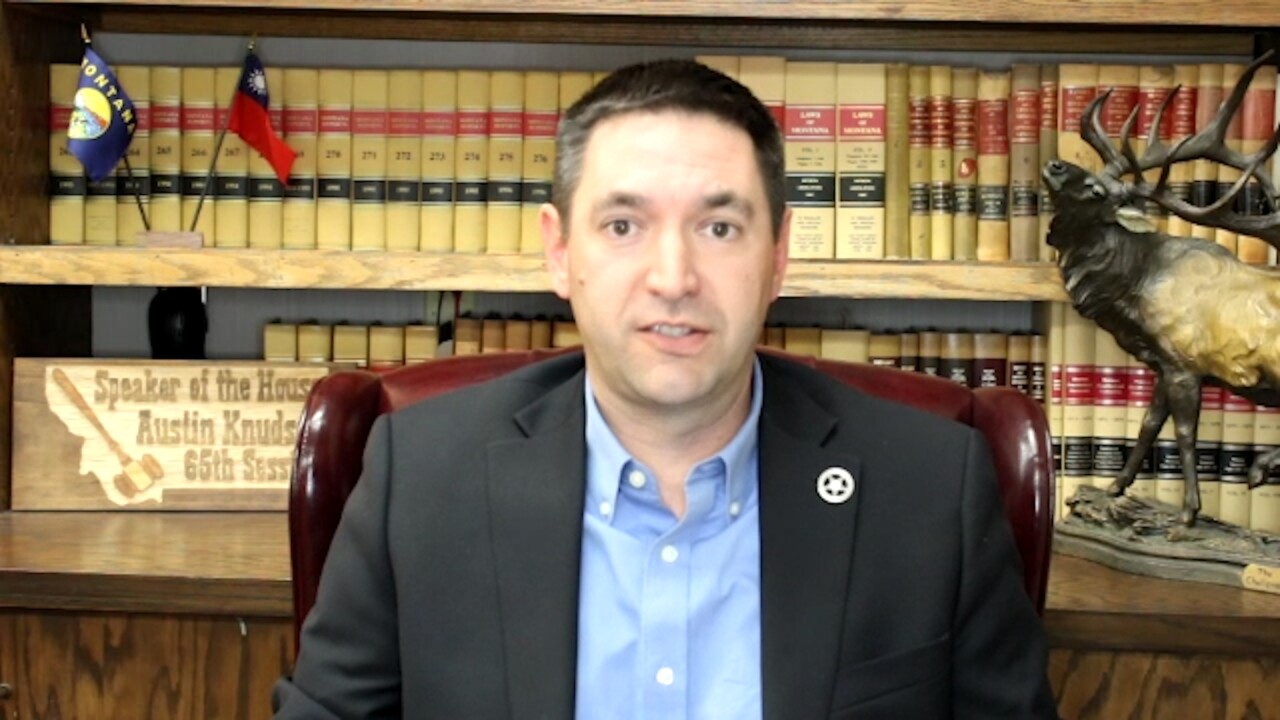HELENA — In his court battle to save Montana’s new abortion restrictions, Republican Attorney General Austin Knudsen is taking aim at a 22-year-old ruling that’s become a legal pillar of abortion rights in Montana: The 1999 Armstrong decision.
In a filing last week asking the Montana Supreme Court to strike it down, Knudsen and his top attorneys said Armstrong was “wrong the day it was decided” and had “invented from whole cloth” a state constitutional right to abortion.
Yet defenders of abortion rights, who are asking Montana courts to void the new laws, say not only will Armstrong help them prevail, but also should prevent the issue from advancing past Montana courts to the more conservative U.S. Supreme Court.
“In cases around challenges to state laws that are brought under the state constitution, those do not go up to the U.S. Supreme Court,” said Martha Stahl, president of Planned Parenthood of Montana, the lead plaintiff in the lawsuit challenging the abortion restrictions. “They would go to the Montana Supreme Court and that’s as far as they go.”

Knudsen asked Montana’s Supreme Court to reverse Armstrong in his appeal of an order issued last October by state District Judge Mike Moses of Billings, that blocked the new laws from taking effect while Moses decides the larger issue of their constitutionality.
It’s possible the seven-member high court won’t rule right away on Knudsen’s request, calling it premature and instead, waiting for Moses to issue his broader ruling on the law’s constitutionality — a ruling that certainly will be appealed.
Yet whatever is decided and whenever it’s settled, Armstrong is sure to play a pivotal role in determining the fate of abortion restrictions enacted last year by the Montana Legislature’s Republican majority and GOP Gov. Greg Gianforte.

“(Armstrong) basically said that right of privacy applies to the right to make decisions about (women’s) health care and to see the health-care provider of their choice, particularly for abortion,” Stahl told MTN News. “Our argument is that all of those (new laws) restrict the ability of a patient to seek abortion care, pre-viability (of the fetus), from the provider of their choice.”
Armstrong, decided in October 1999, came in a lawsuit by Kalispell physician James Armstrong and his physician assistant colleague, Susan Cahill, challenging a 1995 law that said physician assistants could not perform abortions in Montana.
Armstrong and Cahill, who’d been performing abortions for many years, said the law was an unconstitutional infringement on women’s right to choose their healthcare provider for a legal procedure.
The suit actually failed before the U.S. Supreme Court, but then reverted to state court, where a district judge and then a unanimous Montana Supreme Court ruled the law violated Montana’s fundamental constitutional right to privacy.
Then-Justice James Nelson wrote the lengthy decision. He told MTN News the 1995 law didn’t rely on any medical evidence to restrict a patient’s medical choice, but rather on “partisan ideology” and religious beliefs opposing abortion.

“I think the important thing is that the right of a woman to choose a pre-viability abortion is grounded in the right of individual privacy -- that the Constitutional Convention, the framers, considered probably one of the most important fundamental rights that they were providing,” he said in an interview this week.
Or, as he wrote in the 1999 decision: “Quite simply, (the law) at issue prevents a woman from obtaining a lawful medical procedure – a pre-viability abortion – from a health-care provider of her choosing. In so doing, (this law) unconstitutionally infringes a woman’s right to individual privacy under Montana’s constitution.”
Knudsen, however, is arguing the privacy right not only doesn’t create a right to abortion but also does not erase all restrictions on abortion, placed by the Legislature.
The laws in question outlaw abortion after 20 weeks of pregnancy, severely restrict access to abortion pills, require doctors to ask abortion patients if they want to see an ultrasound of the fetus and ban abortion insurance coverage in publicly subsidized health plans.
Knudsen says nothing in the state constitution prevents the Legislature from creating these regulatory restrictions.
Knudsen also called the Armstrong decision “unrestrained judicial activism,” that creates a right “arising from the sociological conviction of seven judges.”
Nelson firmly rejects that claim, saying anyone who reads the court’s 1999 ruling can see it’s “grounded in a very strong, thorough analysis of Montana’s constitutional right of privacy.”
“It wasn’t the court’s (religious) beliefs that dictated that decision,” he says. “It was dictated by the court’s legal analysis overcoming the Legislature’s decision to intervene on the basis of religious beliefs and partisan ideology.”
Nelson also agrees with Stahl that because these abortion protections in Montana “are totally grounded in Montana constitutional law,” they likely aren’t subject to change because of federal court rulings that could allow more abortion restrictions.

When asked if a decision on the Montana laws could fall under the jurisdiction of the U.S. Supreme Court, one of the state’s top attorneys on the case said the claims raised by Planned Parenthood are based only on the state constitution.
“Right now, this focuses on state issues,” said state Assistant Solicitor General Katie Smithgall. “This case is truly a case for the Montana court system. … At this point, the focus is clearly on the constitutional claims raised by the plaintiffs and these laws enacted by the Legislature.”




